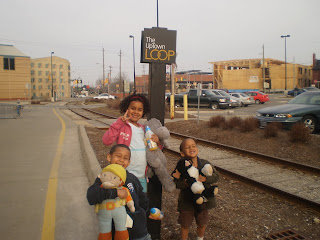What are our Options for the Future?
The first step of the evaluation process considered two main strategic alternatives:
1. The Road Oriented Plan represents a continuation of the current trends of road
expansion with about four per cent of trips being made using transit.
2. The Transit Oriented Plan with Strategic Road Improvements includes a balance
of investment between road and transit improvements. New transit improvements
would build on and support the rapid transit system and strategic road
improvements would support transit and goods movement and address areas of
major demand where required.
These two options were screened against a series of criteria that reflect the goals of the Regional Transportation Master Plan. The results are shown in the table below.
Criteria Road Oriented Plan Transit Oriented Plan with
Strategic Road Improvements
• Consistent with Places to Grow,
Regional Official Plan
• Optimize the Transportation System
• Promote Transportation Choice
• Foster a Strong Economy
• Support Sustainable Development
The Transit Oriented Plan with Strategic Road Improvements was carried forward as it
met all the criteria. Three alternative networks were then developed that feature the
Council approved rapid transit system and include increasing conventional transit
service across the region and strategic road improvements. All three alternatives
include strategic road improvements to either support the transit system or provide
capacity where required to address operational issues.
Description of Transit Network Alternatives:
Alternative A - High Frequency, High Transfer Network:
• Most bus routes provide service every 10 minutes or better by 2031.
• Most routes feed into the rapid transit system.
• Provides direct bus service to the rapid transit route.
• The percentage of trips using transit is expected to increase to 6% in 2016, 6.5%
in 2021 and 8.3% in 2031.
Alternative B - Medium Frequency, Low Transfer Network:
• Some routes provide less frequent service compared to Alternative A, but many
more routes are then able to provide service every five minutes or better.
• More cross regional routes and more direct routes that reduce the need for
passengers to transfer from one route to another.
• More express routes.
• Provides more attractive service for transit trips in the suburban areas.
• The percentage of trips using transit is expected to increase to 6% in 2016, 6.9%
in 2021 and 13.8% in 2031.
Alternative C - High Frequency, Low Transfer Network:
• Improves on the previous network by increasing the number of routes with
service every five minutes or better.
• Provides some routes parallel to the rapid transit system with stops closer
together to attract riders that are beyond a convenient walking distance of a rapid
transit station.
• Additional routes could be implemented in the later years of the plan as the rapid
transit system matures.
• The percentage of trips using transit is expected to increase to 6% in 2016, 13%
in 2021 and 17.3% in 2031.












